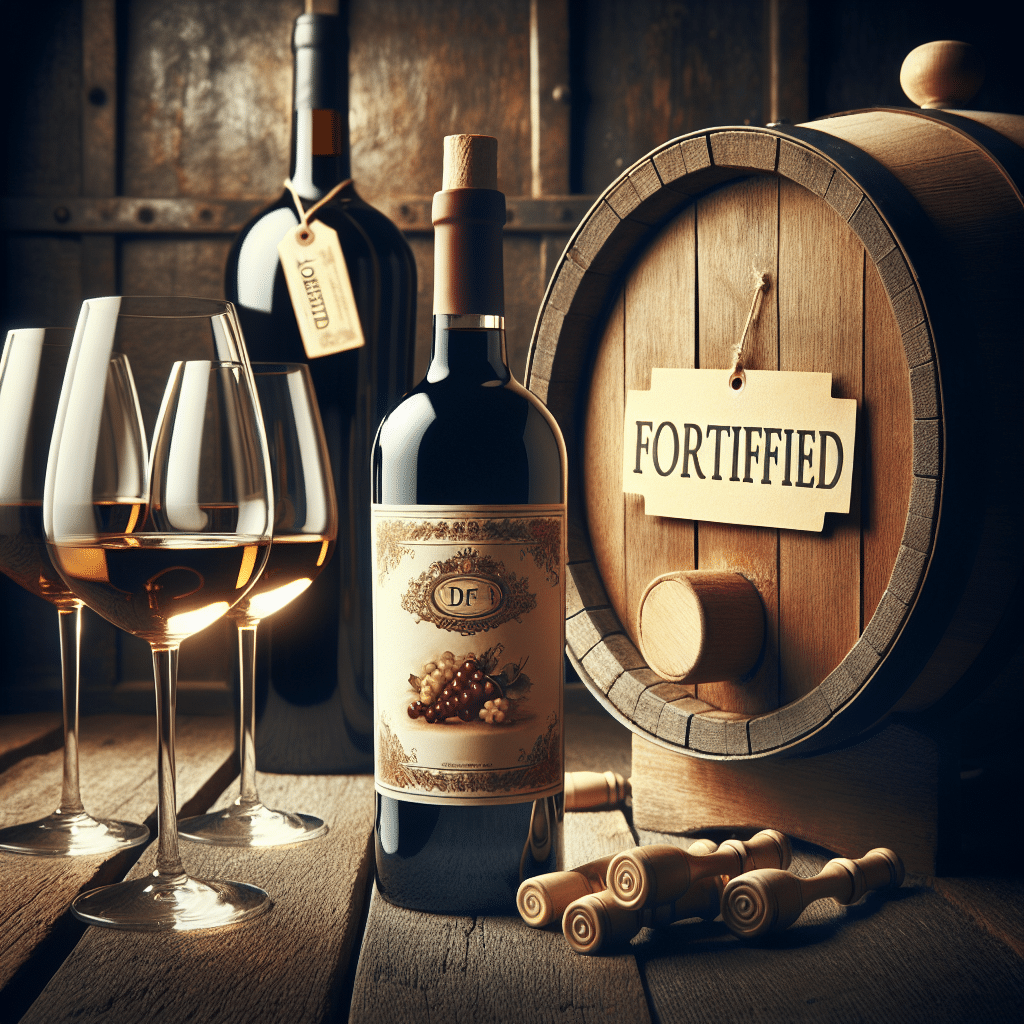Introduction
Fortified wine is a type of wine that has had a distilled spirit, usually brandy, added to it, which increases its alcohol content and alters its flavor profile. This process not only enhances the wine’s longevity by stabilizing it but also creates a unique taste that varies depending on the base wine and the type of spirit used. Common examples of fortified wines include Port, Sherry, Madeira, and Vermouth. These wines are typically enjoyed on their own or paired with various food items, making them versatile choices for both casual and gourmet occasions. Understanding fortified wine opens up a world of flavor possibilities and enriches your wine appreciation journey.
What is Fortified Wine?
Fortified wine originates from the practice of enhancing traditional wines by adding distilled spirits, particularly brandy, during the fermentation process. This technique originated in Europe, mainly to preserve wine for long journeys across the ocean. The higher alcohol content and the resulting stabilization influenced wine character and longevity, allowing the beverage to age gracefully without spoilage.
How Fortified Wine is Made
The making of fortified wine is a straightforward yet nuanced process. Below is a detailed breakdown:
1. Selection of Base Wine
The first step involves choosing a suitable base wine. The choice largely depends on the desired flavor profile of the final product. For example, a sweet wine like Muscat serves as a base for some dessert wines, while a dry wine may be used for other varieties.
2. Fermentation
Once the grapes are harvested, they undergo fermentation. This process is crucial as it converts the sugars in the grapes into alcohol. The length of fermentation can vary depending on the desired sweetness of the final wine.
3. Addition of Distilled Spirit
After a portion of fermentation is complete, a distilled spirit is added. This usually happens before fermentation is complete to retain some of the natural sugars. The amount of spirit added varies, contributing to the final wine’s sweetness and alcohol content. For example, in Port wine, brandy is added when fermentation is at about halfway completed, creating a rich, sweet wine.
4. Aging
After the spirit is added, the wine undergoes aging, which can occur in barrels or tanks. Aging enhances the complexity of the wine, allowing flavors to mature and evolve. The duration of aging varies widely; for example, Sherry may be aged for several years, while other fortified wines like Port may age for decades.
Types of Fortified Wine
There are several notable types of fortified wines, each with unique characteristics and serving suggestions:
1. Port
Originating from Portugal’s Douro Valley, Port wine comes in various styles, including Ruby, Tawny, and Vintage. Each style is differentiated by its method of aging and the type of grapes used. Port is often enjoyed as a dessert wine and pairs well with cheeses, chocolates, and nuts.
2. Sherry
Now primarily produced in Jerez, Spain, Sherry can be categorized into styles such as Fino, Amontillado, and Oloroso. Each has its flavor profile determined by the aging process and type of barrel used. Sherry is versatile; it can be served as an aperitif or paired with a wide variety of foods.
3. Madeira
Madeira wine, hailing from the Madeira Islands, is known for its unique production method, where heat is applied during aging. This results in a complex flavor profile, ranging from dry to sweet. Madeira is often enjoyed with rich dishes or desserts.
4. Vermouth
Vermouth is a fortified wine flavored with various botanicals, herbs, and spices. It is commonly used in cocktails but can also be enjoyed on its own. There are two primary types: dry (white) and sweet (red), each offering different flavor experiences.
Fortified Wine Production Techniques
The production of fortified wines employs various techniques that influence their flavors and qualities:
1. Solera System
This unique aging process is particularly used in Sherry production. Wines are aged in a series of barrels, where younger wines gradually replace older ones, maintaining consistency and complexity over time.
2. Infusion
For Vermouth, the infusion technique involves steeping herbs and spices in the base wine before the spirit is added, creating a distinctive flavor profile that diverges from traditional fortified wines.
3. Oxidative and Non-Oxidative Aging
Some fortified wines, like Sherry, undergo oxidative aging, where exposure to oxygen shapes their character. In contrast, non-oxidative aging occurs in a sealed environment, creating lighter, fresher flavors.
Common Uses and Pairings
Fortified wines are extremely versatile, making them an integral part of various culinary experiences:
1. Culinary Uses
Fortified wines such as Sherry are often used in cooking, adding depth and richness to sauces and stews. Port is frequently used in desserts or marinades.
2. Food Pairings
When pairing fortified wines with food, consider the characteristics of the wine:
- Port: Pairs well with blue cheese and chocolates.
- Sherry: Complements tapas, seafood, and creamy pasta dishes.
- Madeira: Great with rich meats and chocolate desserts.
- Vermouth: Works nicely in cocktails or as a refreshing aperitif with olives and cheeses.
Health Considerations
Consuming fortified wine has both positive and negative health implications. Moderate consumption may offer some cardiovascular benefits due to the antioxidants present in wine, while excessive use can lead to dependence and health issues. It’s essential to enjoy fortified wines responsibly.
FAQ
1. What is the alcohol content of fortified wines?
Fortified wines typically have an alcohol content ranging from 15% to 22%, depending on the type of fortified wine and the amount of distilled spirit added.
2. Are fortified wines sweet or dry?
Fortified wines can be both sweet and dry. For example, Port is generally sweet, while dry varieties like Fino Sherry are less sweet.
3. How should fortified wine be served?
Fortified wines can be served chilled or at room temperature, depending on the variety. They can also be combined into cocktails or sipped neat.
4. Can fortified wine improve over time?
While many fortified wines can be aged further, they do not all improve with time. Each type of fortified wine has its prime drinking window, which varies based on the style and production methods used.
Conclusion
Understanding fortified wine allows you to explore a rich and diverse world of flavors and traditions. The meticulous processes behind each variety, combined with their versatility in culinary applications, make fortified wines exceptional choice for both casual drinkers and seasoned connoisseurs. Next time you encounter a fortified wine, remember the craftsmanship and history embedded within each bottle.



